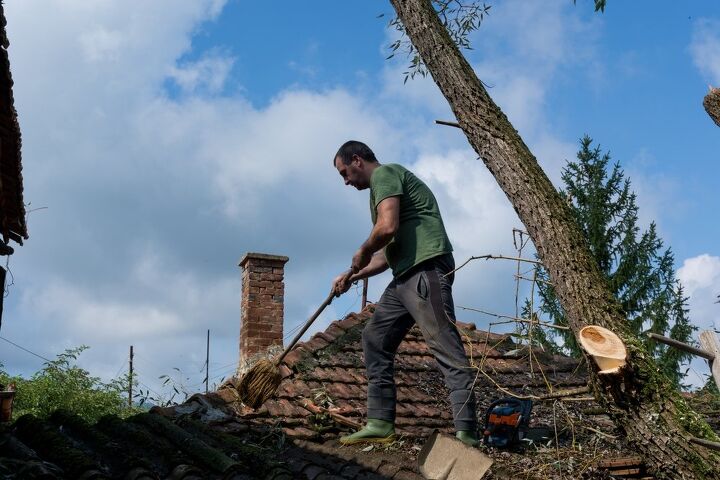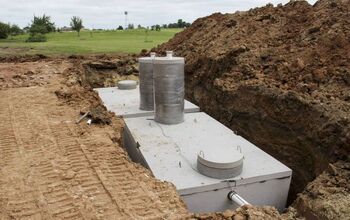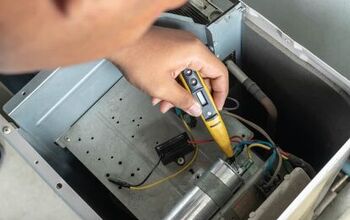Does Homeowner Insurance Cover Tree Removal?

Dealing with a tree that falls on your property is a nightmare. Not only is it a major inconvenience, but it can also be expensive to remove if you don’t get any help. So, does homeowner insurance cover tree removal?
Homeowner insurance covers tree removal when it’s caused by events like wind and lightning. However, it may only cover tree removal if the tree falls on an insured structure, such as your house or garage. Your insurance provider won’t cover preventative tree removal. In most cases, it also won’t cover tree removal if the tree falls because of a flood or earthquake.
You will likely need to go through your neighbor’s insurance provider if their tree falls on your property. Follow along as we explore everything you must know about how homeowner insurance companies cover tree removal.
Will The Insurance Company Cover Tree Removal?
Homeowner insurance will cover tree removal in the event of an emergency. For example, the insurance company will likely reimburse you if a tree falls on your house after a storm. That said, insurance companies typically only cover tree removal if some damage is involved.
One common scenario is that heavy winds knock a tree onto your home or garage. In that case, an insurance representative will come to your house to assess the damage. This process can take a while, and in some cases, claims can take weeks or even months to process.
In the event of a natural disaster, the insurance company is likely to act much faster. That includes tropical storms, hurricanes, tornadoes, and extreme winds. Call emergency services right away if a tree falls on your house during a storm. From there, move to safety and call your homeowner insurance provider to start the process.
Why Won’t Insurance Cover Tree Removal?
Homeowner insurance providers are sticklers about their policies. Because of that, they are quite strict about what they will cover when it comes to tree removal. Let’s look at some of the scenarios where your homeowner insurance provider won’t likely cover tree removal.
The Structure Isn’t Insured
Homeowner insurance companies only cover structures that are insured. For example, if part of a tree breaks off and falls on your home, they will cover the removal. However, they won’t cover tree removal if a tree falls on an uninsured structure, such as a new shed.
You must disclose new additions to homeowner insurance companies to make sure they are covered. Otherwise, they will likely deny coverage and say that they can’t help you because the structure isn’t insured.
The Tree Didn’t Fall
Insurance companies are unlikely to remove your tree if it didn’t fall. Homeowner insurance doesn’t typically include preventative tree removal. Many homeowners understandably worry about damaged trees that look like they could fall at any moment.
Unfortunately, you will have to pay out of pocket to remove the tree. The insurance company will only cover tree removal if it falls, or if a large piece of it falls and lands on one of the structures on your property.
It costs between $400 and $1,500 to remove a tree without the help of an insurance company. The cost varies based on where you live, the company you choose, and how big the tree is.
The Cause Of The Damage Isn’t Covered
What caused your tree to fall? Unfortunately, homeowner insurance providers only cover tree removal for certain incidents. For example, most homeowner insurance companies will remove the tree if it falls due to lightning or extreme wind.
However, the average homeowner's insurance coverage doesn’t include tree removal if it falls because of a flood. You must purchase separate insurance coverage to cover flood damage. Some providers offer flood coverage at an extra premium.
Otherwise, you will have to go through another company for flood insurance. Mudslides and earthquakes aren’t typically covered either. It’s worth the cost to invest in special event insurance if you live in an area prone to floods, earthquakes, and mudslides.
It Was Your Neighbor’s Tree
The insurance company may cover tree removal if your neighbor’s tree falls on your property. However, it ultimately depends on the insurance provider and why the tree fell. They won’t likely cover tree removal if the tree fell because it was dead or due to an uncovered event.
However, there are instances when you can file a claim with your neighbor’s insurance provider. In that case, their provider must cover the cost of tree removal on your property. Either way, it’s important to call your provider because they may cover it or at least help you get in touch with your neighbor’s provider.
The Tree Lands In An Empty Area
Many insurance companies only cover tree removal if it falls on a structure in your yard. Sadly, that means that your homeowner insurance policy may not cover the tree removal if it lands in an empty area. For example, if the tree falls in the grass beside your garage.
They may not cover the removal even if the tree fell because of an event they typically cover. Some providers will cover this, but it’s important to ask them when you take out the policy.
Does Homeowner Insurance Cover The Whole Cost?
The insurance provider may cover the whole cost, but it depends on the total. Many providers simply cover up to $1,000 of the total cost. In some cases, that may be enough to cover the tree removal, and you won’t have to pay a dime.
It can cost as much as $1,500 to remove a tree, but that’s the high end of the spectrum. In that case, you would likely only have to pay $500 out of pocket. However, some insurance providers only cover up to $500 of the cost.
It’s a great idea to ask your insurance company about their coverage for several events, such as tree removal. This will give you an idea of whether they’re the right provider for you. It’s worth the extra cost to choose a provider with better coverage options. That way, you won’t have to pay as much out-of-pocket for property damage.
Summing It Up
Homeowner insurance covers tree removal if the tree falls on a structure on your property. However, they will only cover the cost if the tree falls because of an event they cover, such as wind and lightning. In most cases, you will need to get separate insurance to cover tree removal caused by floods and earthquakes.
Related Guides

Nick Durante is a professional writer with a primary focus on home improvement. When he is not writing about home improvement or taking on projects around the house, he likes to read and create art. He is always looking towards the newest trends in home improvement.
More by Nick Durante



























